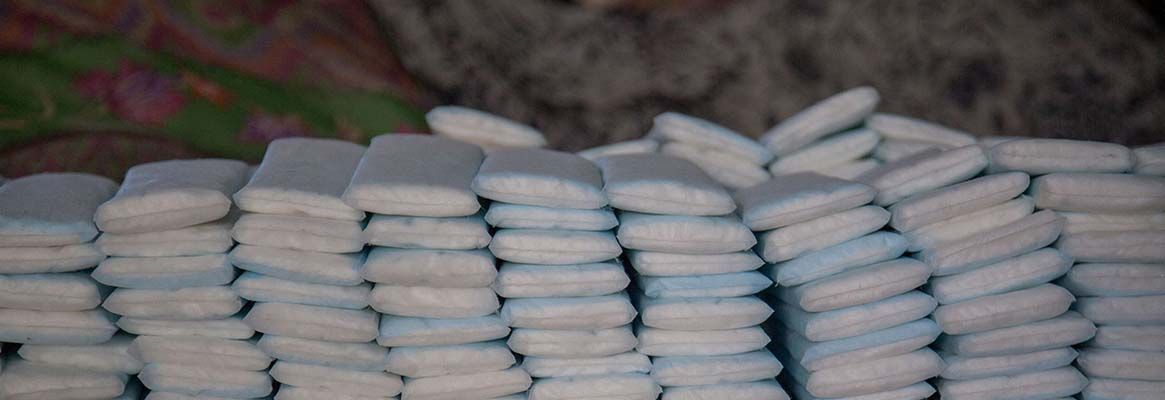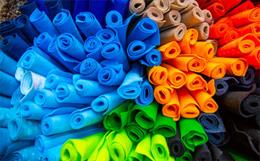A growth rate of over 18% to 20% is expected in India for the sanitary napkins market, which holds a huge potential and excellent profit margin for the manufacturers, say B. S. Pancholi and Dr. Sandeep R. Naik. |
Today,the global market for absorbent hygiene products is over US$ 50 bn (includingwipes). The evolution of hygiene products in Europe and the North America hastaken 4 to 5 generations. Feminine care was introduced over 100 years ago. Babydiapers were invented 60 years ago. Adult incontinence products appeared 30years ago.
Femininehygiene (lady napkins) is hygiene absorbent products engineered to absorb andretain body fluid without causing any leakage. The user should always feel dryand comfortable. It consists of an absorbent pad sandwiched between two sheetsof nonwoven fabric.
Thereare 3 major types of products, viz, (a) Thick sanitary napkins. (b) Ultra thinsanitary napkins. (c) Panty liners being used in the market. The size of eachand their content vary from market to market.
Globalmarket status &
Themenstrual cycle starts for young women between the ages 11 - 17, frequentlyaround 12-1 3 years. On average a woman experiences a period every 28
Percapital consumption of feminine hygiene products is illustrated in Table 2.
Someof the established and potential manufacturers of sanitary napkins are listedin Table 3.
Marketstatus &
Asregards consumption of total hygiene, absorbent products in India, total unitsconsumed in 2007 in India were 2,829 million pieces. Baby diapers comprised 5%whereas adult incontinence 1%
If wesee the above projections of women in the category of 15 - 54 years in Indiaand the details of sales of absorbent hygiene products in India, then the totalsales were US$ 213 million in 2007, out of which adult incontinence share was9%, baby diapers share was 18% whereas feminine care contributed 73%. Thus, in India,the evolution is expected to go quicker.
Structureand composition
Sanitarynapkin products:
Function
Sanitarynapkins are designed to absorb and retain menstrual fluid discharges. When usedthey are applied inside an undergarment with a press-on adhesive fixing strip.
Mainfunctions/key elements of sanitary napkins are absorb and retain menstrualfluid, isolate fluids from the body, no leakage, no unaesthetic appearance, noodour, stay in place, comfortable to wear. Key criteria for success arehygiene, performance, comfort, convenience and aesthetics as tabulated in Table5.
Thestructure of typical samples is given below:
Product designs, full size pads:
- Topsheet: nonwoven or apertured film.
- Absorbent core: pulp (Thick core either fluff core with SAP or Air laid core with SAP.
- Backsheet: film.
Product designs, Ultra thin pad:
- Topsheet - nonwoven or apertured film.
- Transfer layer
- Absorbent Layer
- Absorbent Core
- Backsheet film
Product shape can be either flat or curved with/without wings to secure the pad in place and add additional leak protection. It is available in various pattern designs with perfume (deodorant) added to cover or absorb odour. Packaging is done either folded and single wrapped or packed flat and unwrapped.
Raw material
Materials used in absorbent hygiene products:
- Nonwoven
- Pulp
- Super absorbent
- Plastic film
- Elastic materials
- Fastening devices
- Packaging
One typical example is as given below in Table 6.
The raw material content can slightly vary for different products and for different market.
A few suppliers of raw materials
- Nonwoven fabric: The permeable top layer of 12 to 18 GSM is normally a spunbond fabric made of polypropylene while the impermeable polyethylene/nonwoven film is the bottom layer for preventing the fluid to pass through. Sometimes a nonwoven fabric glued to polyfilm to give feel. Source of nonwoven fabrics in India by Ginni Filaments or Supreme Nonwoven or Pantex, Fiber Web, Union Industries, PVD plastic, Gujarat, etc. Cost of spunbond fabric is approximately Rs.140/kg.
- Cellulose Pulp - Wayerhaesder - Switzerland, Rayonier- UK, Tembee Tartas - France, Stora Enso-Italy.
- Super Absorbent Polymer BASF-India, Degassa-Italy. 1 gram SAP generally absorbs 30 ml water or up to 20 ml urine in 3 seconds.
- Polyethylene Back Sheet Exten-Switzerland, Plastik-Italy, Huhtamaki-Germany.
- Silicon Paper MCS-Switzerland, ICA-Italy, Rossella-Italy.
- Hot Melt seal and positioners - Savare, National Henket-Italy.
- Packaging - It can be from India or abroad.
Manufacturing method
The absorbent pad is the most important component of napkin. Absorbent pad is made of wood pulp mixed with SAP. Absorbent pad is prepared first. The absorbent pad is first created by using shredded wood pulp and vacuum laid to required shape and size, the weight is automatically controlled. By pressing it is formed to required thickness. Before forming the pad the pulp is mixed with super absorbent polymers (SAP) for enhancing fluid holding capacity.
The super absorbent polymer is basically acrylic based polymer that forms gel after absorbing liquid. By this it can hold water up to 30 times its weight. Sodium acrylate, potassium acrylate, alkyl acrylate. This absorbent pad is attached to permeable top sheet made of nonwoven, mainly spunlace fabric. Then the same is attached to non-permeable bottom sheet made of polyethylene. The three layers/ components are glued and sealed to prevent leakage by using heat or ultrasonic vibrations. The content of absorbing pad composite will vary for different types napkins.
The application of accessories like tapes, sealing, etc for comfort of fit to the undergarments is required in some cases. This multi-step manufacturing and folding and packaging is carried out automatically. Precise control on SAP mixing with pulp, pulp weight, size and thickness, quality of seal to ensure leakage prevention, wastage control, etc is an important step in the manufacturing. However, the counting and packaging can be made non-automatic to reduce machine cost. But it may increase recurring cost and wastage.
Project cost
Product: Lady Napkin
Assuming machine cost Rs. 0.90 crore (Make: China)
- Semi-automated machine (packaging manually)
- Production - 350 pcs/ minutes (at 100% capacity and efficiency).
- Efficiency - 80%.
- Waste - 3%.
- Shift/day - 3 shifts of 8 hours.
- Working days - 300 (80% utilization of machine out of 300 working days).
Note
- Project profile is calculated based on approximately eight weight/gram of regular sanitary napkin and also based on China make machine.
- Land & building cost is considered in the project. However, in many cases, if project is implemented in existing infrastructure, the same may not be applicable.
- Capital subsidy schemes are not considered while calculating the profit.
- Conversion cost is Rs. 0.19 per piece.
Conclusion
At present the production of about 900 mn pieces are manufactured in India and rest are imported. Total women in the age group of 15 - 54 years in India are about 300 mn. Total menstrual periods/year is 13 that last for 4 - 8 days and an average of 3pieces/day is used. Then consumption would be 58, 500 mn pieces/year. Present consumption is 2,659 mn pcs, i.e., 4.5% penetration while in Europe and USA it is well above 73 to 92%. Hence a growth rate well above 18 to 20% is expected in India. The Indian market is quite huge and as per reports available only 35% of India's requirement is manufactured in India, as of now. A huge market, great potential and excellent profit margin is envisaged in manufacturing of sanitary napkins in India.
Acknowledgement
The authors acknowledge with thanks the Director and Management of MANTRA for giving permission to publish the paper.
About the Authors
The authors are with the Man Made Textiles Research Association (MANTRA) Surat, Gujarat.








